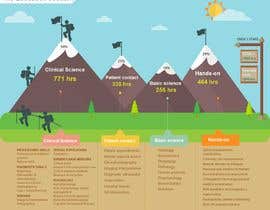Relieve Pain In The Back By Identifying The Everyday Habits That Might Be Triggering It; Straightforward Tweaks Could Change Your Way Of Life Into One That Is Pain-Free
Relieve Pain In The Back By Identifying The Everyday Habits That Might Be Triggering It; Straightforward Tweaks Could Change Your Way Of Life Into One That Is Pain-Free
Blog Article
Material Composed By-Love Secher
Keeping correct position and avoiding common pitfalls in day-to-day tasks can significantly impact your back health and wellness. From how you sit at your desk to how you raise heavy objects, small modifications can make a big difference. Think of a day without the nagging back pain that prevents your every step; the service may be simpler than you think. By making a few tweaks to your everyday behaviors, you could be on your means to a pain-free presence.
Poor Posture and Sedentary Way Of Living
Poor pose and a sedentary way of life are two major contributors to neck and back pain. When you slouch or hunch over while resting or standing, you put unnecessary stress on your back muscular tissues and spine. This can result in muscle discrepancies, tension, and ultimately, persistent pain in the back. Furthermore, sitting for extended periods without breaks or exercise can compromise your back muscle mass and result in rigidity and discomfort.
To deal with inadequate stance, make an aware effort to sit and stand up straight with your shoulders back and straightened with your ears. Bear in mind to maintain your feet level on the ground and prevent crossing your legs for extensive periods.
Incorporating spine pain stretching and enhancing exercises right into your everyday routine can additionally help enhance your pose and minimize neck and back pain connected with an inactive way of living.
Incorrect Lifting Techniques
Improper training strategies can considerably contribute to pain in the back and injuries. When you raise hefty items, remember to bend your knees and use your legs to lift, as opposed to depending on your back muscular tissues. Stay clear of turning your body while lifting and keep the things near your body to reduce strain on your back. It's essential to maintain a straight back and prevent rounding your shoulders while raising to prevent unneeded pressure on your back.
Always examine bad back pain of the things before raising it. If it's too heavy, request aid or usage tools like a dolly or cart to deliver it securely.
Bear in mind to take breaks throughout raising tasks to provide your back muscular tissues a chance to relax and stop overexertion. By carrying out correct training strategies, you can prevent pain in the back and minimize the risk of injuries, guaranteeing your back stays healthy and solid for the long term.
Absence of Regular Workout and Stretching
A sedentary way of life without regular workout and stretching can dramatically contribute to back pain and pain. When you do not take part in exercise, your muscle mass end up being weak and stringent, resulting in poor position and enhanced pressure on your back. Routine workout assists reinforce the muscles that support your spine, boosting stability and decreasing the risk of neck and back pain. Integrating stretching into your regimen can likewise improve flexibility, stopping stiffness and pain in your back muscle mass.
To avoid back pain triggered by an absence of exercise and stretching, aim for at least thirty minutes of modest exercise most days of the week. Consist of workouts that target your core muscular tissues, as a solid core can aid relieve pressure on your back.
Furthermore, take breaks to extend and relocate throughout the day, especially if you have a desk task. Basic stretches like touching your toes or doing shoulder rolls can assist ease tension and stop pain in the back. Prioritizing regular workout and extending can go a long way in keeping a healthy and balanced back and minimizing discomfort.
Verdict
So, remember to stay up directly, lift with your legs, and remain active to avoid pain in the back. By making straightforward modifications to your day-to-day behaviors, you can prevent the discomfort and limitations that include pain in the back. Deal with your spinal column and muscles by practicing great stance, proper lifting strategies, and routine exercise. Your back will certainly thank you for it!
